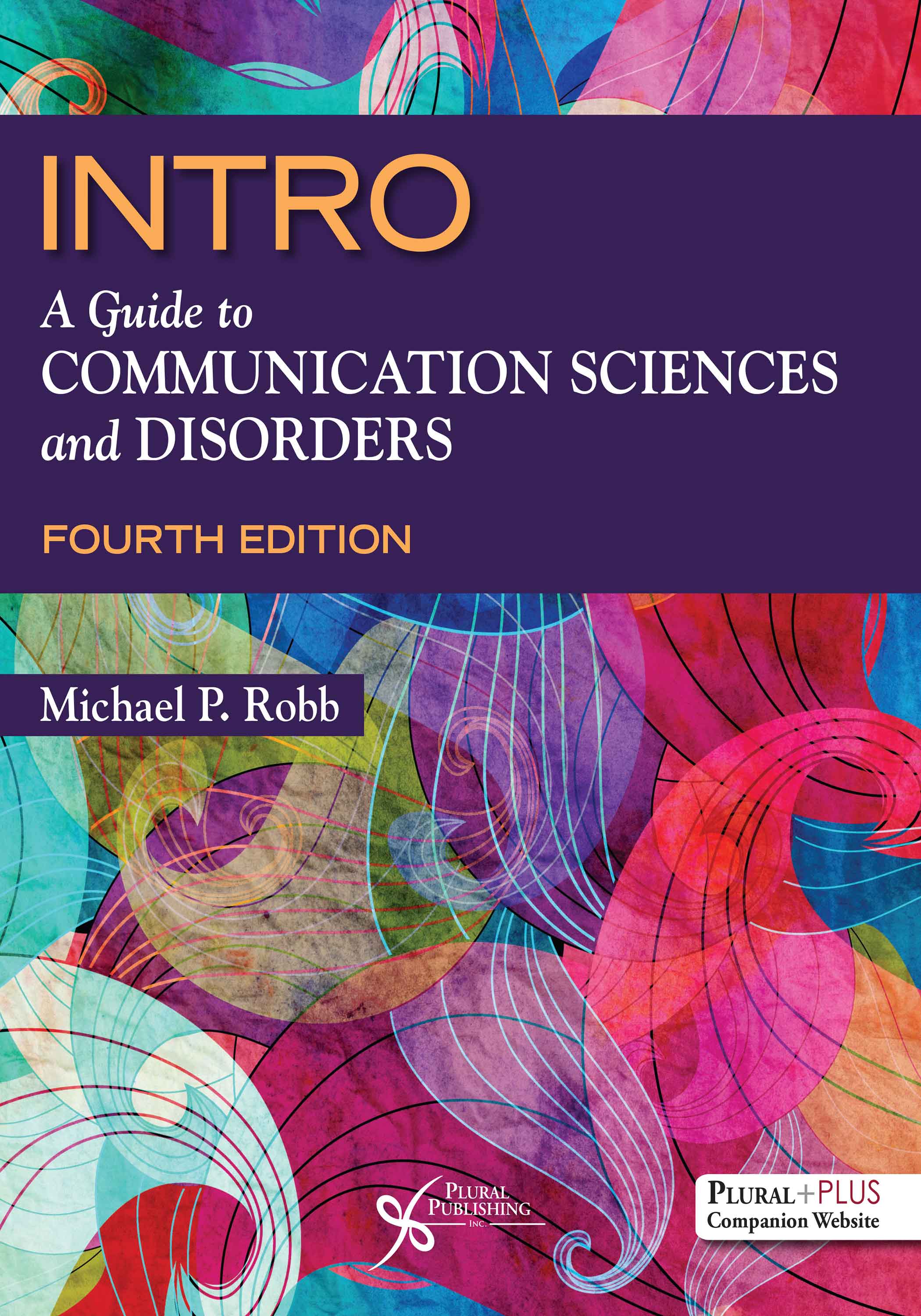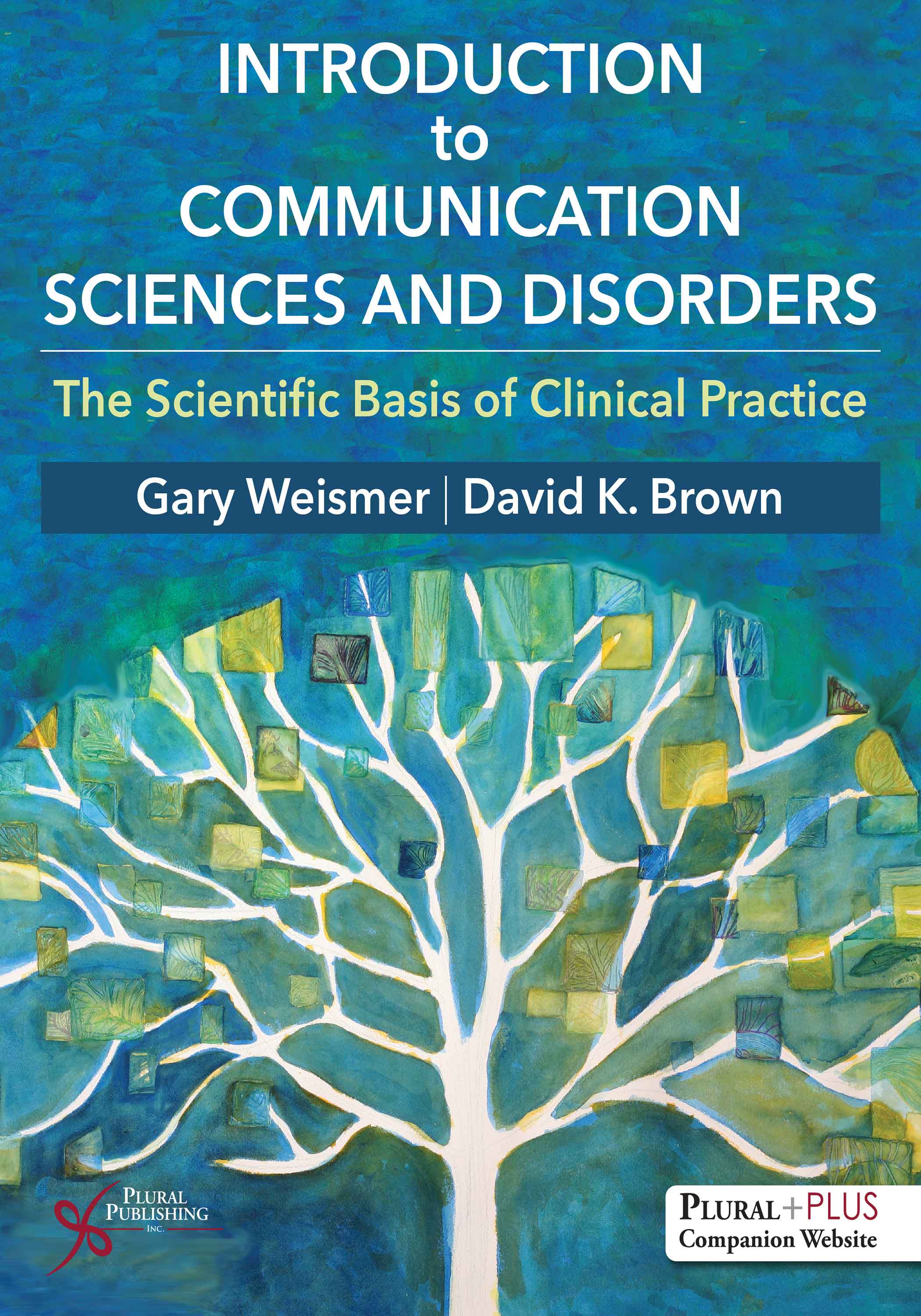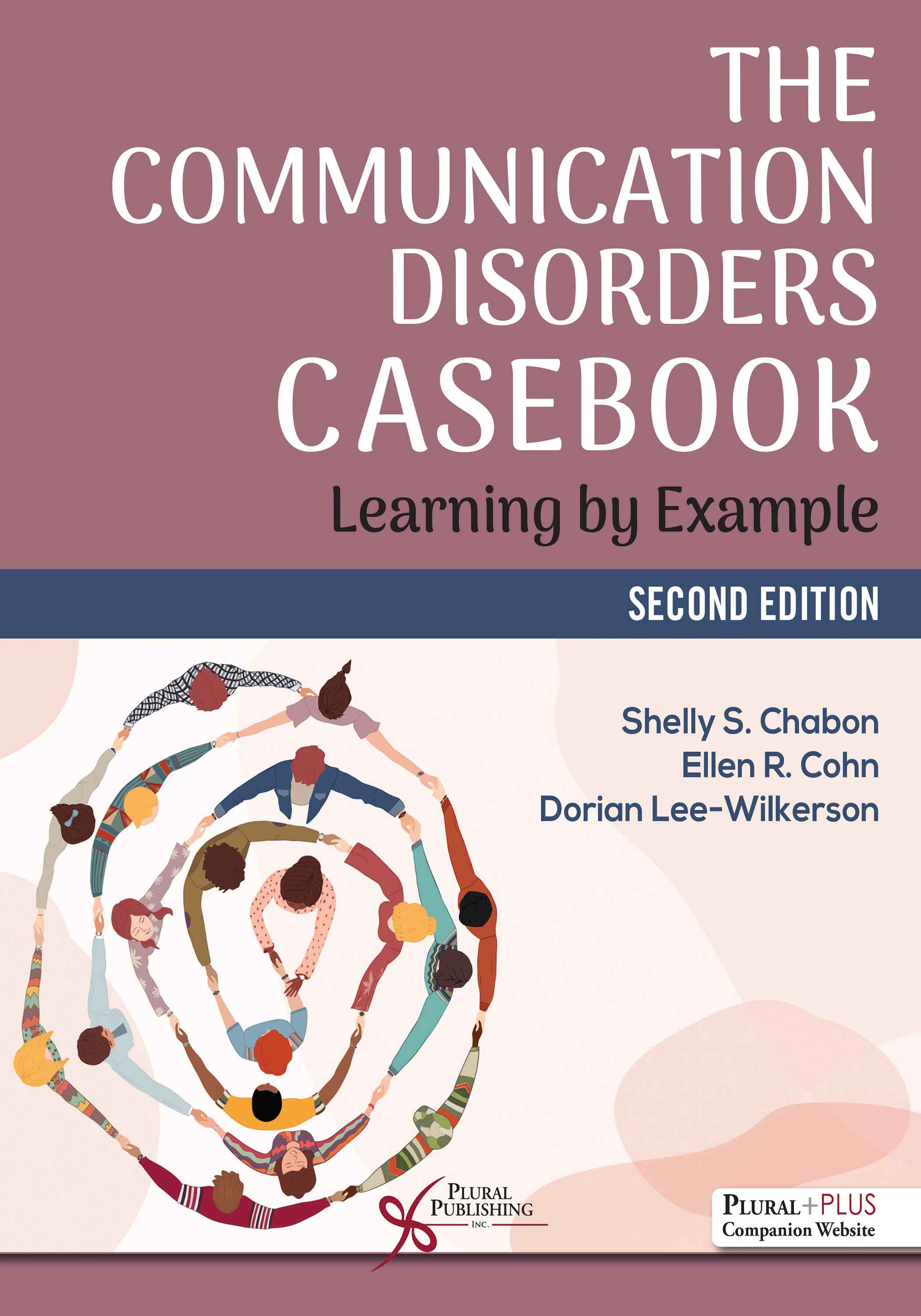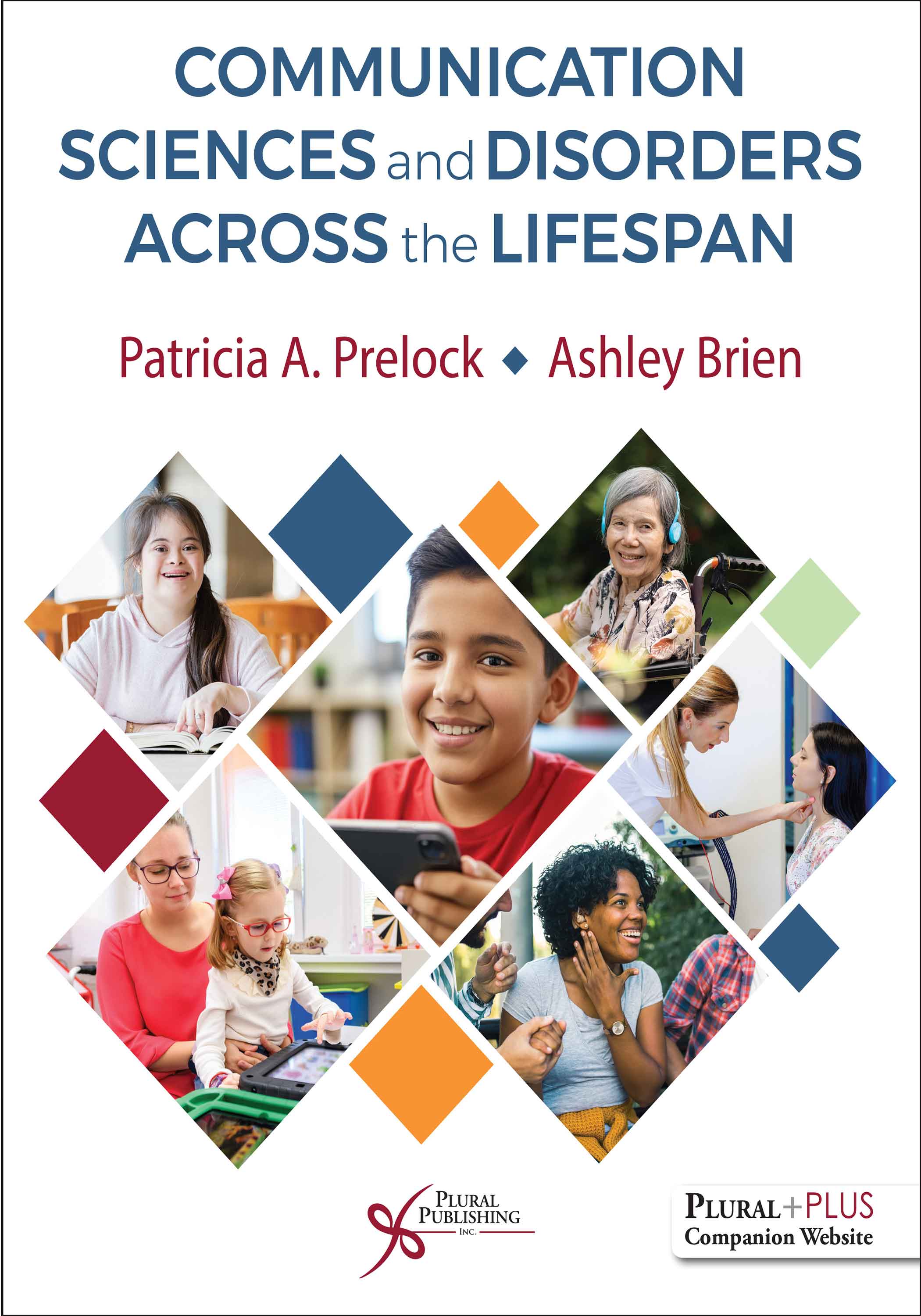
INTRO: A Guide to Communication Sciences and Disorders
Fourth Edition
Michael P. Robb
Details: 412 pages, Full Color, Softcover, 8.5" x 11"
ISBN13: 978-1-63550-476-7
© 2025 | Available
For Instructors
Purchase
With its engaging color layout and easy to read writing style, INTRO: A Guide to Communication Sciences and Disorders, Fourth Edition is designed for undergraduate students with an interest in entering the field of communication sciences and disorders. INTRO is an introduction to the professions of speech-language pathology and audiology and the underlying discipline on which they are based, communication sciences and disorders. The text provides essential information concerning a wide range of communication disorders found in children and adults.
The structure of the book is consistent across chapters to assist beginning students in grasping new vocabulary and concepts. An introduction to each of the various disorders includes some of the fascinating historical background surrounding each disorder, as well as current theories. A portion of each chapter is dedicated to diverse and cultural aspects of communication disorders, as well as prevalent information about various communication disorders as found in English-speaking countries around the world, including Australia, Canada, the United Kingdom, the United States, and New Zealand.
New to the Fourth Edition
New chapters:
- A new chapter on autism spectrum disorder
- The original chapter covering neurogenic communication disorders has been divided into separate chapters on neurogenic language disorders and motor speech disorders
- Updated history section for each chapter profiling the diverse contributions from individuals to the field of communication sciences and disorders
- Updated the Cultural Considerations for each chapter
- Updated online ancillary resources, and new eFlashcards for students
Key Features
- Solo-authorship ensures a cohesive writing style throughout the book
- A strong international focus
- Each chapter begins with learning objectives and ends with study questions to review key concepts
- Bolded key terms and a comprehensive glossary improve retention of the material
- The text includes real-life examples in the form of video links to help reinforce the information in the text
- Each chapter provides a focus on “past and present”
- FYI boxes call out interesting and novel information
- Full color design and images to engage undergraduate students
The text is also an essential text for speech-language pathology assistant (SLPA) courses.
PluralPlus Online Ancillaries
For instructors: PowerPoint Slides, Test Bank, Syllabus
For students: Quizzes, eFlashcards, Links to Related Resources
Foreword to the First Edition by John H. Saxman, PhD
Preface
Reviewers
Section 1. Background to Communication Sciences and Disorders
Chapter 1. Communication Disorders and the Professions
Objectives
Key Terms
Introduction
Terminology and Definitions
Models of Communication
The Professions
A Brief History of the Professions
Educational Preparation
Professional Work Settings
Professional Ethics
Cultural Considerations and Communication Disorders
Summery of Chapter
The Professions of Audiology and Speech-Language Pathology on the World Wide Web
Study Questions
References
Chapter 2. Anatomy of Speech and Hearing
Objectives
Key Terms
Introduction
Speech Anatomy
The Process of Speech Production
Hearing Anatomy
The Process of Hearing
Historic Aspects of Anatomy and Physiology
Cultural Considerations in Anatomy and Physiology
Summary of Chapter
Anatomy and Physiology on the World Wide Web
Study Questions
References
Section 2. Developmental Communication Disorders
Chapter 3. Child Language Disorders
Objectives
Key Terms
Introduction
Terminology and Definitions
Language Development
Historic Aspects of Child Language Disorders
Types of Child Language Disorders
Current Theories Regarding Child Language Development and Disorders
Assessment of Child Language Disorders
Treatment of Child Language Disorders
Cultural Considerations and Child Language Disorders Assessment
Summary of Chapter
Child Language Disorders on the World Wide Web
Study Questions
References
Chapter 4. Child Speech Sound Disorders
Objectives
Key Terms
Introduction
Terminology and Definitions
Historic Aspects of Child Speech Sound Disorders
Types of Speech Sound Disorders
Current Theories Regarding Child Speech Sound Disorders
Assessment of Child Speech Sound Disorders
Treatment of Child Speech Sound Disorders
Cultural Considerations and Child Speech Sound Disorders
Summary of Chapter
Child Speech Sound Disorders on the World Wide Web
Study Questions
References
Chapter 5. Fluency Disorders
Objectives
Key Terms
Introduction
Terminology and Definitions
Historic Aspects of Fluency Disorders
Types of Fluency Disorders
Current Theories Regarding Stuttering
Assessment of Fluency Disorders
Treatment of Fluency Disorders
Cultural Considerations and Fluency Disorders
Summary of Chapter
Fluency Disorders on the World Wide Web
Study Questions
References
Chapter 6. Cleft Lip and Palate
Objectives
Key Terms
Introduction
Terminology and Definitions
Historic Aspects of Cleft Lip and Palate
Disorders of Cleft Lip and Palate
Current Theories of Cleft Lip and Palate
Assessment of Cleft Lip and Palate
Treatment of Cleft Lip and Palate
Cultural Considerations and Cleft Lip and Palate
Summary of Chapter
Cleft Lip and Palate on the World Wide Web
Study Questions
References
Chapter 7. Autism Spectrum Disorder
Objectives
Key Terms
Introduction
Terminology and Definitions
Historic Aspects of Autism Spectrum Disorder
Autism Spectrum Disorder and Communication
Current Theories Regarding Autism Spectrum Disorder
Assessment of Autism Spectrum Disorder
Treatment of Autism Spectrum Disorder
Cultural Considerations and Autism Spectrum Disorder
Summary of Chapter
Autism Spectrum Disorder on the World Wide Web
Study Questions
References
Section 3. Acquired and Genetic Communication Disorders
Chapter 8. Voice Disorders
Objectives
Key Terms
Introduction
Terminology and Definitions
Historic Aspects of Voice Disorders
Types of Voice Disorders
Current Theories of Voice Disorders
Assessment of Voice Disorders
Treatment of Voice Disorders
Cultural Considerations and Voice Disorders
Summary of Chapter
Voice Disorders on the World Wide Web
Study Questions
References
Chapter 9. Neurogenic Language Disorders
Objectives
Key Terms
Introduction
Terminology and Definitions
Historic Aspects of Neurogenic Language Disorders
Types of Neurogenic Language Disorders
Current Theories Regarding Neurogenic Language Disorders
Assessment of Neurogenic Language Disorders
Treatment of Neurogenic Language Disorders
Cultural Considerations and Neurogenic Language Disorders
Summary of Chapter
Neurogenic Language Disorders on the World Wide Web
Study Questions
References
Chapter 10. Motor Speech Disorders
Objectives
Key Terms
Introduction
Terminology and Definitions
Historic Aspects of Motor Speech Disorders
Types of Motor Speech Disorders
Current Theories Regarding Motor Speech Disorders
Assessment of Motor Speech Disorders
Treatment of Motor Speech Disorders
Cultural Considerations and Motor Speech Disorders
Summary of Chapter
Motor Speech Disorders on the World Wide Web
Study Questions
References
Chapter 11. Dysphagia
Objectives
Key Terms
Introduction
Terminology and Definitions
Historic Aspects of Dysphagia
Types of Dysphagia
Causes of Dysphagia
Assessment of Dysphagia
Treatment of Dysphagia
Cultural Considerations and Dysphagia
Summary of Chapter
Dysphagia on the World Wide Web
Study Questions
References
Chapter 12. Augmentative and Alternative Communication
Objectives
Key Terms
Introduction
Terminology and Definitions
Historic Aspects of Augmentative and Alternative Communication
Types of Augmentative and Alternative Communication
Assessment of Augmentative and Alternative Communication
Treatment of Augmentative and Alternative Communication
Cultural Considerations and Augmentative and Alternative Communication
Summary of Chapter
Augmentative and Alternative Communication on the World Wide Web
Study Questions
References
Chapter 13. Genetics and Syndromes
Objectives
Key Terms
Introduction
Terminology and Definitions
Historic Aspects of Genetics
Types of Syndromes
Assessment of Genetic Conditions
Treatment of Genetic Conditions
Cultural Considerations and Genetics
Summary of Chapter
Genetics and Syndromes on the World Wide Web
Study Questions
References
Section 4. Audition
Chapter 14. Hearing Disorders
Objectives
Key Terms
Introduction
Terminology and Definitions
Historic Aspects of Hearing Disorders
Types of Hearing Disorders
Assessment of Hearing Disorders
Online Hearing Measurement
Cultural Considerations and Hearing Disorders
Summary of Chapter
Hearing Disorders on the World Wide Web
Study Questions
References
Chapter 15. Auditory Rehabilitation
Objectives
Key Terms
Introduction
Terminology and Definitions
Historic Aspects of Aural Rehabilitation
Treatment Approaches: Hearing Rehabilitation
Treatment Approaches: Speech and Language Rehabilitation
Cultural Considerations and Aural Rehabilitation
Summary of Chapter
Aural Rehabilitation on the World Wide Web
Study Questions
References
Glossary
Index
INTRO: A Guide to Communication Sciences and Disorders, Fourth Edition comes with access to supplementary student and instructor resources on a PluralPlus companion website.
The companion website is located at: https://www.pluralpublishing.com/publication/iagcsd4e
STUDENTS:
The student resources include practice quizzes, eFlashcards, and additional web resources
To access the student resources, you must register on the companion website and log in using the access code located in the front of your textbook.
INSTRUCTORS:
The instructor resources include PowerPoint slides, a test bank, and a sample course syllabus. You will also have access to all of the student resources listed above.
To access the instructor resources, you must contact Plural Publishing, Inc. to be verified as an instructor and receive your access code.
Email: instructormaterials@pluralpublishing.com
Tel: 866-758-7251 (toll free) or 858-492-1555
*Note for students: If you have purchased this textbook used or have rented it, your access code will not work if it was already redeemed by the original buyer of the book. Plural Publishing does not offer replacement access codes for used or rented textbooks.

Introduction to Communication Sciences and Disorders: The Scientific Basis of Clinical Practice
First Edition
Gary Weismer, David K. Brown
Details: 388 pages, Full Color, Softcover, 8.5"x11"
ISBN13: 978-1-59756-297-3
© 2021 | Available

The Communication Disorders Casebook: Learning by Example
Second Edition
Shelly S. Chabon, Ellen R. Cohn, Dorian Lee-Wilkerson
Details: 563 pages, B&W, Softcover, 8.5" x 11"
ISBN13: 978-1-63550-409-5
© 2025 | Available

Communication Sciences and Disorders Across the Lifespan
First Edition
Patricia A. Prelock, Ashley Brien
Details: 487 pages, Full Color, Softcover, 8.5" x 11"
ISBN13: 978-1-63550-453-8
© 2026 | Available

